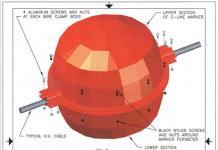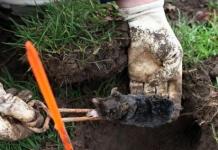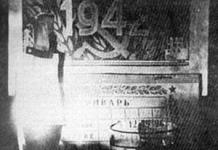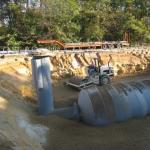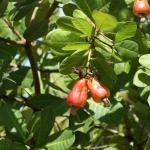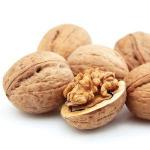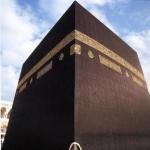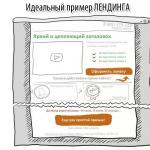Gardens are regularly attacked by a variety of insects. Some are not considered dangerous enough to require disposal measures. Aphids on cherries are not immediately noticeable: they do not eat the foliage and do not spoil the fruit. At first, the tree develops normally and bears fruit. And only when the pest colony grows does it become clear why aphids are among the most dangerous garden pests. Let's find out how and with what help to fight aphids in a personal plot or country house.
Description
Aphids are insects from the order Hemiptera, which has about 4,000 species. These are mostly small, no more than a few millimeters, pests. They can have different colors and body shapes. Stone fruit trees, including cherries, are most often inhabited by black aphids. All aphids have a common taste preference: they feed on plant sap. They obtain food using a special proboscis, which pierces the surface of leaf plates or shoots. Aphids prefer succulent parts of the plant - it is easier to “get” food from them. Therefore, all of them, regardless of the species, prefer to settle at the base of the leaves or on the tops of young shoots.
There are wingless and winged forms of aphids. The former multiply intensively without leaving the confines of one plant. One wingless individual gives up to three generations within a month. These are hundreds of thousands of aphids, each of which will give birth to its own offspring. On average, up to ten generations are born in three summer months.

Winged aphids are bisexual. They ensure migration to other plants. They do not appear in every generation, but only when the colony grows excessively or when unfavorable conditions occur. For example, winged female aphids appear with the autumn cooling. They fly away to lay overwintering eggs. From each such egg in the spring, a wingless aphid larva will appear, capable of same-sex reproduction.
As they feed, aphids secrete a sweet, sticky substance, honeydew, which attracts other insects. Honeydew is collected by bees - it produces honeydew honey. The main “consumers” of honeydew are garden ants. They take care of aphids: they protect them from ladybugs, transfer them to more succulent parts of plants, hide overwintering eggs in anthills to protect them from the cold, and in the spring they deliver them to plants. Aphids, accustomed to being cared for, learn to secrete honeydew only when an ant approaches, so that the ant can remove the sweet drops directly from the protrusion on the body.
Without the help of garden ants, aphid colonies would not be able to reach such a scale: wingless individuals are not able to change location, winged individuals reproduce more slowly. In addition, these insects have enough natural enemies that feed on them.
Causes and signs of damage
In the early stages of infection, cherry aphids are practically invisible. Upon closer inspection, you can see insects clustered at the base of some of the leaves. A large number of ants appear on the trunk and branches. When an aphid colony grows, deformation of young shoots is visible: they curl, young leaves do not develop, and internodes are reduced. As a result, the tops of the shoots curl into a ball and gradually wither. Nearby leaves and shoots become covered with honeydew. The more insects, the more sticky secretion, to the point that it begins to drip from the leaves.

Gardeners often do not pay attention to aphids: damage to young shoots does not affect the current harvest and the general condition of the cherry. But this is a misleading impression. The next year, the weakened branches will not bear fruit, and over time the entire tree may die. The main reason for the appearance of aphids on cherries is a large number of garden ants. Cherries that are overfed or receive little fertilizer are more often attacked.
Another probable reason is a large amount of weeds, on the roots of which overwintering eggs can survive. Aphids are more likely to appear on cherries that have not been pruned or have been pruned incorrectly. The more dense the crown, the more shelter there is for the pest.
Fighting methods
What to do if aphids appear on cherries? First of all, the fight must be comprehensive:
- cherries are treated with agents that kill aphids, while simultaneously destroying possible shelters in the form of weeds and root shoots;
- destroy anthills;
- create favorable conditions for ladybugs.
To compensate for the damage caused by pests, cherries are fed with complex fertilizers.
Aphids can be controlled by chemical or biological means. The first ones are used if the colony has already grown to a significant size. The latter are used in the initial stages of infection.
Chemical means
Chemical treatment has both advantages and disadvantages. They act quickly and completely destroy pests. To combat aphids, so-called systemic insecticides are used. That is, those that accumulate in the plant, making it poisonous to the pest. Toxic substances enter all parts of the plant, including the fruits.
Pesticides cannot be used less than 20 days (and some - a month) before harvest. For the same reason, spring treatments are carried out along the “bare trunk”, 20 days before flowering. Most systemic insecticides are poisonous to bees, which will die if they collect the poisoned pollen.

Each insecticide uses its own active ingredient:
- Aktara. It is quickly absorbed into plant tissue and acts for two weeks. The main active ingredient is thiamethoxam.
- Actellik is a highly toxic intestinal contact insecticide containing pirimiphos-methyl.
- Inta-vir – contains cypermethrin.
- Confidor is a systemic insecticide with a low consumption rate and a long period of action. Contains imidacloprid.
Typically, several treatments are carried out over a period of 10 days. It is advisable to alternate insecticides with different active ingredients. The working solution is prepared according to the instructions on the package. Cannot be stored. Treatments are carried out in dry, windless weather, preferably in the evening.
By biological means
Black aphids that have infected cherries can be “eradicated” with biological preparations. This is a group of insecticides (it would be more correct to call them chemical-biological) that use poisonous substances of natural origin.
It can be:
- Avermectins are products of fungal synthesis. They are used in such preparations as Actofit and Fitoverm.
- Bacteria or predatory nematodes that eat pest eggs are used in the preparations Nemabakt and Antonem-F.
Biological drugs are weaker than chemical ones and act more slowly. They can be used even during the growing season, when the cherries urgently need to be “saved”, but the fruits are already ripe. For example, when using Fitoverm, you can harvest in just three days. Such preparations are also harmless to bees.
Natural herbal preparations
It is not advisable to treat cherries with folk remedies at a high level of infection, but in the initial stages they will have a sufficient effect to get rid of the pest. They are also used during the growing season, when chemicals cannot be used due to violation of harvest deadlines. For spraying, use an infusion of garlic or onion. To prepare it, 150 g of carefully crushed raw materials are diluted in 5 liters of water, a little grated laundry soap is added. Cherries are sprayed with infusion every 10 days for a month.

You can make an infusion from red pepper, wood ash or tobacco dust. To do this, 300 g of raw material is diluted with a small amount of water, boiled, then the infusion is poured with a bucket of water. Treat three times with the same frequency as in the previous method - every 10 days.
Infusions of herbs such as celandine, yarrow or dandelion also help. You can reduce the number of pests on cherries by simply “rinsing” the crown with a directed stream of water.
Prevention measures
Fighting aphids on cherries when the pests have already infested the tree is quite difficult. Therefore, you should not neglect preventive measures that will help prevent infection. Sometimes, to protect yourself from aphids, it is enough to destroy garden ants. Most often, anthills are located along curbs and paths, under the roots of cut trees and in other protected shady places. To destroy, you can use pesticides or tear up anthills and pour boiling water over them. It is important to constantly fight ants, preventing the appearance of anthills in the garden and surrounding areas.

A universal preventive measure is catching belts. They will help protect cherries not only from aphids, but also from other pests. Sticky trapping belts are constructed in early spring.
Around cherry trees you can plant thyme, parsley, dill and other herbs. Their smell repels winged individuals migrating in search of new plants. In addition, ladybugs love to settle on these grasses, feeding on aphids. Important preventive measures include timely removal of fallen leaves, weeding and removal of cherry root growth.
Black aphids will not be able to cause damage to the crop if the fight against them is started in a timely manner. Young cherries are easier to treat with pesticides. Tall mature trees will protect against pest invasion by preventive measures.
Cherry is one of the most popular plants in Russian gardens. It is valued for its tasty and healthy fruits, from which jam, juices, compotes and other culinary delights are prepared.
Most often, cherries grow on our plots in the form of shrubs up to 2-2.5 meters tall. However, there are also taller plants - over 3 meters high. Cherry is not a very cold-resistant plant. Many varieties cannot withstand frosts below −25-30 degrees. However, for Siberia and other cold regions, more winter-hardy varieties have been developed that cope well with harsh winters and at the same time produce very good yields.
There are many varieties of cherries. They can be either self-fertile (not requiring other varieties on the site) or self-fertile (in this case, you need to grow several different varieties on the site).
On a note! The most popular self-fertile cherry varieties are Pamyat Enikeev, Shokoladnitsa, and Garlyanda Vreshchia.
Many gardeners strive to plant a cherry orchard so that these plants delight with their fruits from the very beginning of summer until autumn. To do this, you need to plant early varieties (Shpanka, Molodezhnaya, Vasilyevskaya), medium-ripening varieties (Vladimirskaya, Zhukovskaya, Kharitonovskaya), as well as late varieties (Lyubskaya, Shchedraya, Rubinovaya). In the northern regions it is better to plant Ob, Altai swallow, Ural ruby, all of them can withstand severe frosts well. But in Moscow and the Moscow region, Turgenevka and Griot Moskovsky have proven themselves well.
Aphid on cherry
Cherry aphid
There are several varieties of aphids in gardens. Unlike caterpillars and other similar pests, it does not eat leaves and fruits, but huge hordes of this pest can destroy the entire garden if the necessary measures are not taken in time.
Cherry aphids (also called black aphids) are common on cherry trees and shrubs. In a very short amount of time, this pest is able to attack a cherry orchard. Aphids lay eggs in the bark, where they overwinter. With the onset of warmth, the eggs turn into insects, which climb onto the young shoots of the cherry tree in search of food.
Aphids on cherries: how to get rid of them
A modern gardener has access to a huge number of drugs that help destroy this malicious pest. But it should be noted that at the moment when fruits are already hanging on a tree or bush, it is impossible to treat the plants with chemicals. It is better to do such treatments before flowering, but you should not limit yourself to them.
Catching belts help well in the fight against cherry aphids. Ants often bring aphids to trees and shrubs. She sucks the juice from the leaves, and the ants, in turn, drink the milk from the aphids. Hunting belts will help in the fight against ants and other crawling insects. They are installed in early spring, when many pests are still dormant and not active. At the same time, catching belts need to be updated from time to time, since their sticky layer gradually wears off. Attach hunting belts to the bottom of a tree or bush (before the first branch). As a result, properly installed trapping belts will not allow a single insect onto the tree branches; all of them will get stuck and die in the sticky belt.
Catching belts help well in the fight against cherry aphids
In addition, in early spring it is worth going around the area and finding all the anthills on it. Ants on cherries pose a great danger; they are the ones who often “breed” aphids. Most often, they build their anthills next to paths, borders, and flower beds.
How to get rid of ants on a cherry: it is recommended to sprinkle ant nests with special preparations that will repel these insects - Ant, Anteater, Thunder 2 and others. A few days after treatment, the ants will disappear and will not cause trouble for a long time.
Note! There are chemicals and traditional methods for controlling aphids on cherries.
If there are aphids on the cherry, they can be destroyed with chemicals; when using them, you must strictly follow the instructions. Most often, the universal product Iskra is used to kill aphids. It contains substances that are deadly to aphids, as well as potassium, which will help restore strength to a weakened plant. Fitoverm is also gaining popularity. This is a natural biological product, the main advantage is that it quickly decomposes, kills pests, and fruits and berries can be collected within two days after treatment. However, it also has disadvantages - one adult tree will need several sachets of this drug and the plants will have to be sprayed with it several times every 10-15 days.
The selected aphid control agent must be diluted according to the instructions. It is best to spray on a cloudy day or in the evening after sunset.
Important! Do not spray trees and shrubs on a rainy day. In this case, the drug will be washed away by rain and it will not have the desired effect on pests.
They process not only on top of the leaves, but also on the back side. This is where most pests hide. It is also recommended to treat the stems, branches, and soil under the plants.
There are also folk eco-friendly methods for combating cherry aphids:
- laundry soap. You need to dilute half a piece of laundry soap in 10 liters of water.
- wood ash (500 grams per 10 liters of water), but the solution must infuse for three days.
- infusion of tomato tops, potatoes, tobacco leaves or herbs.
Don't forget about prevention. Regularly in the cherry orchard you need to trim damaged branches and pull out weeds. It is necessary to promptly get rid of fallen leaves, treat plants for fungal diseases, and whiten trees and shrubs in autumn and spring.
Spraying the cherry orchard
What other pests do cherries have: characteristics and methods of control
In addition to aphids, cherry orchards also attract a large number of other dangerous pests. The cherry weevil can destroy not only leaves, but even buds. This pest does not refuse fruits either. The weevil damages them and then lays eggs there, which overwinter in the fallen berries until the next season. Another terrible cherry pest is the slimy sawfly. It eats away the juicy part of the leaf. The slimy sawfly causes irreparable damage to cherry trees and shrubs. After such an invasion, the plants weaken and shed their leaves early. All this leads to the fact that in severe winters the cherry can freeze. But already ripe cherry berries can be destroyed by the cherry fly. It lays larvae in the berries, which feed on the fruits, spoil them and, naturally, prevent them from filling.
You can spray cherry orchards against all these pests with the above chemicals or folk remedies. However, no treatment will give the desired effect without preventive measures.
- It is imperative to remove diseased and dried branches (this should be done in spring and autumn, as they often contain pests).
- It is necessary to cover up all cracks in trees and bushes, cuts. To do this, use garden varnish.
- All fallen leaves must be collected and preferably burned. You can bury them, but not next to the cherry plantings, but further away.
- Damaged fruits are also collected and destroyed; they must not be left on or under the tree.
- It is worth treating the garden in late autumn with a 5% urea solution.
Also, the cherry orchard needs spring feeding (you can scatter urea on the ice crust), and in August you need to give the trees and shrubs superphosphate and potash fertilizers. All this will help strengthen the plants, protecting them from diseases and pests.
Few gardeners know how to deal with aphids on a tree. There is usually no time to think. If you do nothing, you will not be able to save the berries. After some time, it turns out that all nearby stone fruit trees and shrubs will be infected with black aphids. In a matter of hours, lesions can be seen on the plum, and within a day the aphids will also attack the currants. If there are a lot of insects on the leaves of plants, it will be difficult to remove them. The lost time will lead to the fact that it will not be possible to destroy the agricultural pest without losing plants.
Signs of aphid infestation
Aphids cause a lot of damage to cherry trees. The insect is not interested in the berries; it consumes the green mass and lays larvae for the winter in the bark of the tree. In order for the fight against black aphids to be effective, you should not only know how and with what to remove the pest, but also make sure that it attacked the tree.
The first signs of infection are:
- black spots on leaves;
- deformation of foliage (twisting);
- a large number of ants scurrying along the trunk and branches of an infected tree.
Simple and effective methods
Fighting aphids is not an easy task. And before you start doing this, you should decide how to treat cherries against aphids.
The most effective are chemical compounds, and the safest are folk remedies. The best way to remove pests is to treat trees before buds appear or during the flowering phase with active agents. If it was not possible to spray the cherry at this time, then you can protect the tree at the beginning of summer.
Most cherries enter the fruiting phase in June, so you need to know how to remove aphids on cherries during this period so as not to harm the fruit.
To effectively combat aphids, you should know the rules for processing plants.
- All insecticides of chemical origin should be used strictly as recommended. A concentrated solution can cause damage to the plant no less than damage to aphids. A substance that is too weak will not give the desired result. You should also pay attention to the expiration date of the product.
- Treatment must be done on the back side of the leaves, because the pest settles there. The leaves, shoots and trunk must be dry, so the tree does not need to be watered before spraying.
- For processing, you should choose dry and windless weather. The best time to spray cherries is in the evening.
After pest control measures, the tree needs to be fed with nitrogen fertilizers. If the foliage is not completely eaten, it will recover and the plant will be able to set fruit buds for next year.
Chemicals
The fight against aphids will give the best results if insecticides are used for these purposes - chemical agents for controlling insects. Drugs that save money and time are presented below.
- "Spark". A popular remedy among gardeners for controlling aphids and other insects. This insecticide contains potassium in an easily accessible form. The product is used as foliar feeding of garden trees. The composition should be used in early spring, before aphids attack the cherry.
- The biologically active substance "Fitover", the natural composition of which does not harm the environment, gives excellent results after the first use. The working solution is prepared from 5 ml of product and 600 ml of water.
- Any means to combat the Colorado potato beetle: “Bombardir”, “Aktara”, “Regent” or “Confidor Maxi”. The concentration of the solution should be standard: 1 ampoule per 10 liters of water.
- Complex drug "Intavir", which is effective in the fight not only against cherry aphids, but also other insects, including Coleoptera.
 To treat aphids on cherries, you can use any other insecticides that are not only active against adult insects, but also kill their eggs and larvae. All products should be used immediately after preparation. Otherwise they lose their power.
To treat aphids on cherries, you can use any other insecticides that are not only active against adult insects, but also kill their eggs and larvae. All products should be used immediately after preparation. Otherwise they lose their power.
Mechanical methods
Folk remedies for pest control are simple and accessible to everyone. You can remove aphids on leaves using an unusual method: light a fire in a bucket under a tree. You need to burn old galoshes or a piece of rubber in the fire. Pests cannot stand the toxic smell and die very quickly from it.
Mechanical methods are ineffective only when there are a lot of aphids. In such situations, you should resort to treating the plant with insecticides or more gentle, but no less effective formulations.
Available means
You can fight pests using folk remedies.
- Pepper solution. The active substance is prepared from dry red pepper and water. It is enough to take 30 g of ground red pepper per bucket of water. When using this infusion, be sure to protect yourself: wear glasses and long sleeves, and cover your head.
- Laundry soap, grated on a fine grater and dissolved in 10 liters of boiling water. Once the mixture has cooled, you can spray the tree with it. You should start from the trunk and then work your way up to the crown.
- Infusion of ash. A means for spraying such a composition should be prepared in advance. In order for the concentration of the substance to be sufficient to combat aphids, you should use 0.5 kg of dry wood ash per bucket of water. The substance should be infused for 72 hours. Before use, the liquid should be stirred and then filtered.
- A decoction of shag. A pack of the substance should be steamed with 1 liter of boiling water and left for 3 hours. After this time, the product should be filtered and used immediately.
- An herbal infusion made from weeds containing bitterness or essential oils. The best options would be milkweed, dandelions and marigolds. You can also use garlic.
Many gardeners use combined methods and compositions. Treatment with various substances gives good results; all herbal infusions and decoctions are mixed with soapy water.
Preventive action
In order not to look for methods on how to deal with aphids on cherries, you should take preventive measures.
The simplest methods are described below. Some of them are based on long-term observations of wildlife, others are specific methods of caring for plants.
- Every year, in late autumn and early spring, cherry tree trunks should be bleached with lime. This action will repel insects and help prevent the appearance of clutches of their eggs. Before applying whitewash, dry and damaged bark should be removed from the tree trunk.
- Throughout the summer, weeds growing close to the tree trunk should be controlled. Aphids settle on herbaceous plants, and then they move to cherries. If the weeds are not destroyed, the pest will eventually colonize not only fruit trees, but also vegetable crops.
- Avoid the proximity of cherry trees to viburnum, linden and hawthorn, because these trees attract aphids with their aroma.
- Mulch the soil under the trees and regularly apply mineral fertilizers. Such measures will help strengthen plant resistance to diseases and pests.
- You should get rid of ants using boiling water or any other means.
Biological method
To combat cherry pests in your area, attract insects to the garden for which aphids are food - ladybugs. To do this, plant herbaceous plants with a strong smell nearby:
- marigold;
- cilantro;
- dill;
- fennel;
- lovage;
- parsley.

Parsley planted near a cherry tree will help get rid of aphids
Ladybug larvae are sold in specialized stores. Their cost may vary depending on the region.
Features of processing before and after flowering
There are many ways to treat cherries against pests, and they all have their own characteristics. Deciding how to get rid of aphids on cherries requires taking into account the time of year, as well as the phase into which the plant has entered. Treatment is possible before and after flowering, as well as during the period of fruit ripening. The methods also depend on how soon the cherries will be eaten.
Before flowering, plants can be treated with any composition. Almost all chemical agents (contact, intestinal or systemic) are deactivated after 60 days. At the time of fruiting, only gentle methods should be used to treat cherries against aphids.
You can rid the plant of aphids after flowering and at the time of fruiting using:
A negative feature of aphids is the high rate of reproduction of this pest, so control methods should be alternated. Treatment must be carried out not only when the aphid attacks, but also before. This is done for prevention.
Conclusion
Experienced gardeners know that fighting aphids on cherries is not an easy task. Controlling the number of pests should be a top priority, since pests from cherries can easily move to cucumbers and other plants.
If you ignore the advice, it will be very difficult to remove the pest from the leaves, and you will have to get rid of not only aphids, but also destroy ants. In this case, it will be necessary to use insecticides, since folk remedies may be ineffective in such a situation.
The main sign that a plant is infested with aphids is the appearance of the ends of the branches: the leaves on them acquire a reddish tint, curl and have a lumpy structure.
With the further development of the pest population, the insects become visible to the naked eye, covering the tips of the cherry branches, especially the leaf blades, with a black sticky layer. Once green growth, infected with aphids, resembles burnt leaves.

The insect feeds on plant juices, destroying young, juicy greens. As a result of the colonization of the crop by aphids, there is a significant decrease in the immunity of the cherry and its ability to withstand unfavorable external factors.

If your plant is infested with aphids, then carry out a special chemical treatment in late autumn or early spring. At other times, the use of pesticides on the site is not advisable due to the risk of toxic compounds penetrating the fruits of plants cultivated in the garden.
To combat aphids that have colonized cherries after leaf formation and flowering, treatment methods based on natural materials that are safe for the environment and humans are used.
The most effective remedies for aphids include aqueous extracts from a poisonous plant -. To prepare a biological insecticide, all parts of the seedling are used: roots, stems, leaves and flowers.

The collected celandine bushes are crushed, placed in a bucket at the rate of 1 kg of tops per 10 liters of water, filled with warm water, the container is covered with a lid and infused for 24 hours. Add 40 g of soap to the filtered infusion, pour it into a spray bottle and generously irrigate the entire tree. Separately, they carry out the procedure of dipping the ends of pest-infested branches into a bucket with a soapy infusion of celandine.
Irrigation of trees with infusion of celandine is carried out in dry weather. If it rains after the treatment, it needs to be repeated. The interval between spraying is 2-3 days, the frequency is at least 4-6 times.
Soda ash solution
Spraying trees diluted at the rate of 10 tbsp. A spoonful of soda ash powder in a bucket of water allows you to get rid of aphids without using pesticides on the site. The frequency of treatments with an interval of 2-5 days is at least 5.
An infusion of plant ash with soap is a remedy proven by our grandmothers against garden pests.


To treat cherries against aphids, a glass of sifted plant ash and 50 g of grated laundry soap are diluted in a bucket of water. The strained sticky liquid is poured into a sprayer, from which the trees are sprayed generously, not forgetting to treat the leaves and stems on all sides.
The event is carried out for the first time in early spring and continues throughout the season with an interval of 7-14 days, depending on the pest population and their response to treatments.

Cherry trees attract not only people who wish to eat ripe fruits, but also insects. What are cherry pests and how to control them? Photos and descriptions will help you better study plant enemies and find ways to destroy them.
Fruit trees in our gardens become the subject of close attention of insects that infect almost all parts of the plantings. Leaves and ovaries, flower buds and already ripe fruits, small and large branches suffer from pests. When there is a massive infestation of aphids, caterpillars of various species, and leaf roller mites, they can cause serious damage to the garden, weaken it, or even destroy it.
Which uninvited guests are the most dangerous? How to treat cherries against pests, and when is the best time to carry out such work?

Cherry weevil
 Small, golden-reddish beetles up to 5 mm long feed from early veins on cherry buds, young foliage and flowers. And such damage indicates a serious danger from pests, but weevils do not disdain filling fruits, eating away the indentations right down to the very pit. Here, cherry pests lay their eggs, and the hatching larvae continue to cause damage, destroying the core of the seed. Spoiled fruits fall off, and the larvae move from them to the ground, where they successfully pupate and wait for spring.
Small, golden-reddish beetles up to 5 mm long feed from early veins on cherry buds, young foliage and flowers. And such damage indicates a serious danger from pests, but weevils do not disdain filling fruits, eating away the indentations right down to the very pit. Here, cherry pests lay their eggs, and the hatching larvae continue to cause damage, destroying the core of the seed. Spoiled fruits fall off, and the larvae move from them to the ground, where they successfully pupate and wait for spring.
 In early spring, when the snow has melted, but the buds have not yet awakened, cherry weevils can be manually shaken off onto improvised materials spread under the trees, collected and burned. This method is convenient if low-growing varieties grow in hell, but is completely unsuitable when the pest threatens large trees 5–7 meters high.
In early spring, when the snow has melted, but the buds have not yet awakened, cherry weevils can be manually shaken off onto improvised materials spread under the trees, collected and burned. This method is convenient if low-growing varieties grow in hell, but is completely unsuitable when the pest threatens large trees 5–7 meters high.
Therefore, a more competent and long-term way is to install fishing belts. They will protect the plantings not only immediately, but also throughout most of the summer.
When attacked by weevils, chemical means of protection, as well as traditional methods, are used. How to spray cherries against pests in this case? Modern insecticides, which are used to irrigate crowns, trunks and tree trunks, help against beetles. Treatment is carried out early, after flowering and in the fall, after leaf fall.
In addition, cherries can be treated with a daily infusion of fragrant or chamomile. A bucket of hot water will require 100 grams of plant material and half a bar of crushed laundry soap.
Slimy and other sawfly species
 If larvae appear on the leaves, which simultaneously resemble slugs and caterpillars, then the cherry tree in the area is threatened by the slimy sawfly. The cherry pest shown in the photo and its control should be under the special control of the gardener.
If larvae appear on the leaves, which simultaneously resemble slugs and caterpillars, then the cherry tree in the area is threatened by the slimy sawfly. The cherry pest shown in the photo and its control should be under the special control of the gardener.
Smooth greenish-black larvae do not exceed 4–6 mm in length and appear on young foliage. Finding itself on the upper part of the leaf blade, the sawfly eats away its juicy part, without touching the veins and lower part. As a result of this exposure, the damaged tissue dries quickly, and the leaves on the tree become covered with burn-like spots. Mass infection leads to premature leaf fall, weakening of plants and poor wintering. In the fall, the larvae enter the soil, and in the spring they fly out, becoming adults, ready to reproduce as insects.
Close relatives of the described pest are no less dangerous for cherries: yellow plum and pale-legged sawflies, cherry sawflies. They also damage leaves and ovaries, and closer to autumn they move to the ground and overwinter safely at shallow depths.
 To combat the sawfly, insecticides are used if this does not harm the ripening crop. With minimal infestation, the larvae are picked by hand or washed off with a stream of water onto a film or cloth spread under the tree.
To combat the sawfly, insecticides are used if this does not harm the ripening crop. With minimal infestation, the larvae are picked by hand or washed off with a stream of water onto a film or cloth spread under the tree.
Instead of using chemicals to treat cherries against pests, experienced gardeners recommend using a strong infusion of smoking tobacco.
Cherry aphid
 Cherry or black aphids appear on the tops of young branches in the first month of summer. Insect pests of cherries, which reproduce quickly, cover the succulent parts of the shoots in a dense ball in a matter of days. By feeding on plant juices, aphids cause deformation of the affected leaves and stems. As a result, the garden suffers and productivity decreases:
Cherry or black aphids appear on the tops of young branches in the first month of summer. Insect pests of cherries, which reproduce quickly, cover the succulent parts of the shoots in a dense ball in a matter of days. By feeding on plant juices, aphids cause deformation of the affected leaves and stems. As a result, the garden suffers and productivity decreases:
- Tree growth stops or stops.
- Plants weaken, and fungal infections easily develop in areas damaged by aphids.
- The chances of getting a harvest next year are reduced.
When the cherry pest shown in the photo appears, the fight against it should consist not only of treating it with chemicals, but also of following agricultural practices.
 Important:
Important:
- reduce the population of garden ants that spread aphids to crop plants;
- carry out competent regular pruning of diseased and fattening shoots;
- do not get carried away with applying excessive amounts of nitrogen fertilizers, which provoke the formation of young foliage;
- clean the trunk from old bark and whitewash the trunks.
In addition to treating cherries against pests using insecticides, catching belts are effective in the fight against aphids, as well as treating the plantings with an ash-soap solution and an infusion of mustard powder.
cherry fly
 Seemingly harmless flies can cause no less harm. The cherry fly, for example, is a dangerous pest of cherries, due to which you can lose almost the entire harvest. The larvae laid by insects feed on the fruits and spoil them. When the cherry falls to the ground, the grown insect goes to the surface layer of soil for the winter.
Seemingly harmless flies can cause no less harm. The cherry fly, for example, is a dangerous pest of cherries, due to which you can lose almost the entire harvest. The larvae laid by insects feed on the fruits and spoil them. When the cherry falls to the ground, the grown insect goes to the surface layer of soil for the winter.
 Miner flies are no less dangerous. Cherry pests are detected by the passages in the leaves. Winding tunnels inside the leaf blades indicate that the eggs laid have turned into larvae, ready to emerge and become a new generation of adult insects by spring. In case of mass infection, the leaves suffer so much that the tree cannot properly prepare for winter, as a result it freezes, gets sick, and produces a smaller harvest.
Miner flies are no less dangerous. Cherry pests are detected by the passages in the leaves. Winding tunnels inside the leaf blades indicate that the eggs laid have turned into larvae, ready to emerge and become a new generation of adult insects by spring. In case of mass infection, the leaves suffer so much that the tree cannot properly prepare for winter, as a result it freezes, gets sick, and produces a smaller harvest. 
Hawthorn butterfly, goldentail and other cherry pests
Since early spring, not only bees, but also various types of butterflies have been circling over the cherry orchard. Not all of them hunt for nectar. Cabbage-like hawthorn, lacewing, and cherry moth are prominent representatives of cherry pests.
 Caterpillars of these species actively eat buds and foliage, so it is important to recognize the enemy as early as possible and begin to fight it. At the caterpillar stage, insects are collected by hand or sprayed with chemicals. The gardener decides how to treat cherries against pests. But when choosing an insecticide, it is important that the chemical provides long-term protection and does not harm the crop.
Caterpillars of these species actively eat buds and foliage, so it is important to recognize the enemy as early as possible and begin to fight it. At the caterpillar stage, insects are collected by hand or sprayed with chemicals. The gardener decides how to treat cherries against pests. But when choosing an insecticide, it is important that the chemical provides long-term protection and does not harm the crop.
Since during the season many butterflies manage to give birth to two or three generations, treatment is carried out not only in early spring, after the appearance of foliage, but also at the end of summer.
Cherry pest control and preventative measures
 No matter how fast-acting and effective modern means of insect control are, treating cherries against pests will not give the desired result if there is no competent prevention.
No matter how fast-acting and effective modern means of insect control are, treating cherries against pests will not give the desired result if there is no competent prevention.
Throughout the season, fallen leaves are regularly collected and destroyed. The same is done with mummified, unripe fruits.
Cherry pest control, as in the photo, should involve irrigating the plants with chemicals. But this is far from the main stage. The main work is carried out in the fall and includes:
- pruning diseased, dry and damaged branches;
- sections, as well as cracks in the bark and damaged areas with gum formation are treated with garden varnish;
- fallen leaves, branches and remaining fruits are carefully picked and burned;
- the soil under the trees is loosened and carefully dug up;
- with the onset of the first cold weather, the garden is sprayed with a 5% urea solution.
In the spring, the condition of the trees is checked again and comprehensive treatment is carried out against insects and diseases of fruit crops. Most often, systemic means that are effective against a whole range of hazards are used for this purpose. It is important to irrigate not only the trees themselves, but also the soil underneath them. Repeated spraying is necessary after flowering. Another treatment can be done in the summer.
Treating the garden against cherry flies - video


